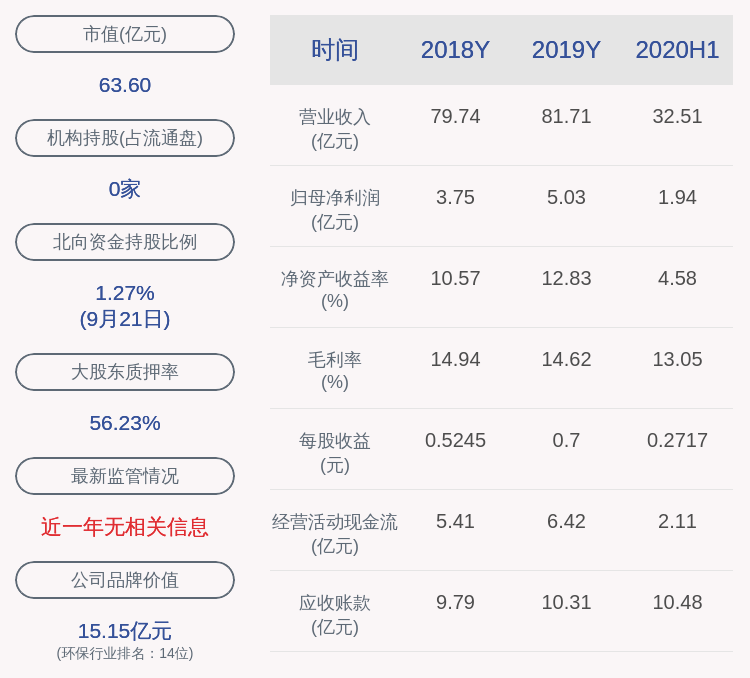segmentfaultе®ҳж–№|дёә Express ејҖеӨ–жҢӮ( дёү )
elsefor(var i = decorators.length - 1; i >= 0; i--) if(d = decorators[i]) r = (c < 3 ? d(r) : c > 3 ? d(target, key, r) : d(target, key)) || r;
returnc > 3 && r && Object.defineProperty(target, key, r), r;
};
var __metadata = http://news.hoteastday.com/a/(this && this.__metadata) || function(k, v) {
if(typeof Reflect === "object"&& typeof Reflect.metadata =http://news.hoteastday.com/a/=="function") returnReflect.metadata(k, v);
};
functionMyDecorators(target) {
target.prototype.say = function{
console.log( "Hello еүҚз«ҜиҮӘд№ иҜҫ!");
};
}
letLeoClass = class LeoClass {
constructor{ }
say{ console.log( "Hello Leo"); }
};
LeoClass = __decorate([
MyDecorators,
__metadata( "design:paramtypes", [])
], LeoClass);
letleo = new LeoClass;
leo.say;
// 'Hello Leo!';
е…¶е®һе°ұжҳҜ __decorate еҮҪж•°е•Ұ пјҢ е…·дҪ“еӨ§е®¶еҸҜд»ҘиҮӘиЎҢз»ҶзңӢе’Ҝ~
д»Һзј–иҜ‘еҗҺ JS д»Јз ҒдёӯеҸҜд»ҘзңӢеҮә пјҢ иЈ…йҘ°еҷЁжҳҜеңЁжЁЎеқ—еҜје…Ҙж—¶дҫҝжү§иЎҢзҡ„ гҖӮ еҰӮдёӢпјҡ
LeoClass = __decorate([
MyDecorators,
__metadata( "design:paramtypes", [])
], LeoClass);
1.5 е°Ҹз»“
жҺҘдёӢжқҘйҖҡиҝҮдёӢеӣҫжқҘеӣһйЎҫиЈ…йҘ°еҷЁзҡ„зҹҘиҜҶ гҖӮ
жң¬ж–ҮжҸ’еӣҫ
2. Reflect Metadata API
2.1 д»Җд№ҲжҳҜ Reflect пјҹ
ReflectпјҲеҚіеҸҚе°„пјүжҳҜ ES6 ж–°еўһзҡ„дёҖдёӘеҶ…зҪ®еҜ№иұЎ пјҢ е®ғжҸҗдҫӣз”ЁжқҘжӢҰжҲӘе’Ңж“ҚдҪң Java еҜ№иұЎзҡ„ API гҖӮ 并且 Reflect зҡ„жүҖжңүеұһжҖ§е’Ңж–№жі•йғҪжҳҜйқҷжҖҒзҡ„ пјҢ е°ұеғҸ Math еҜ№иұЎпјҲ Math.random зӯүпјү гҖӮ
жӣҙеӨҡ Reflect иҜҰз»Ҷд»Ӣз»Қ пјҢ иҜ·йҳ…иҜ»ж–ҮжЎЈгҖҠMDN ReflectгҖӢ:
https://developer.mozilla.org/zh-CN/docs/Web/Java/Reference/Global_Objects/Reflect гҖӮ
2.2 дёәд»Җд№ҲеҮәзҺ° Reflectпјҹ
е…¶ж ёеҝғзӣ®зҡ„ пјҢ жҳҜдёәдәҶдҝқжҢҒ JS зҡ„з®ҖеҚ• пјҢ и®©жҲ‘们еҸҜд»ҘдёҚз”ЁеҶҷеҫҲеӨҡд»Јз Ғ пјҢ иҝҷйҮҢдёҫдёӘж —еӯҗ?? пјҢ зңӢзңӢжңүдҪҝз”Ё Reflect е’ҢжІЎдҪҝз”Ёжңүд»Җд№ҲеҢәеҲ«пјҡ
еҪ“еҜ№иұЎйҮҢжңү Symbol ж—¶ пјҢ еҰӮдҪ•йҒҚеҺҶеҜ№иұЎзҡ„ keysпјҹ
const s = Symbol( 'foo');
const k = 'bar';
const o = { [s]: 1, [k]: 1 };
// жІЎжңүдҪҝз”Ё Reflect
const keys = Object.getOwnPropertyNames(o).concat(Object.getOwnPropertySymbols(o));
// дҪҝз”Ё Reflect
Reflect.ownKeys(o);
иҝҷзңӢиө·жқҘжҳҜдёҚжҳҜз®ҖеҚ•еӨҡдәҶпјҹ
жӣҙеӨҡ Reflect иҜҰз»Ҷд»Ӣз»Қ пјҢ иҜ·йҳ…иҜ»ж–ҮжЎЈгҖҠMDN ReflectгҖӢ гҖӮ
2.3 д»Җд№ҲжҳҜ Reflect Metadata
Reflect Metadata жҳҜ ES7 зҡ„дёҖдёӘжҸҗжЎҲ пјҢ е®ғдё»иҰҒз”ЁжқҘеңЁеЈ°жҳҺзҡ„ж—¶ж·»еҠ е’ҢиҜ»еҸ–е…ғж•°жҚ® гҖӮ Type еңЁ 1.5+ зҡ„зүҲжң¬е·Із»Ҹж”ҜжҢҒе®ғ пјҢ дҪ еҸӘйңҖиҰҒпјҡ
- npm i reflect-metadata --save гҖӮ
- еңЁ tsconfig.json йҮҢй…ҚзҪ® emitDecoratorMetadata йҖүйЎ№ гҖӮ
- дҪҝз”Ё Reflect.metadata API ж·»еҠ е…ғж•°жҚ®пјӣ
- дҪҝз”Ё Reflect.getMetadata API иҜ»еҸ–е…ғж•°жҚ® гҖӮ
class LearnReflect {
@Reflect.metadata( 'inMethod', 'B')
public hello: string {
return'hello world';
}
}
console.log(Reflect.getMetadata( 'inClass', LearnReflect)); // 'A'
console.log(Reflect.getMetadata( 'inMethod', new LearnReflect, 'hello')); // 'B'
жҺЁиҚҗйҳ…иҜ»
- иқҢиҡӘдә”зәҝи°ұе®ҳж–№|дә‘жёёжқӮи®°В·зҗҘзҸҖеұӢдёЁжқЁжһ«гҖҗ科幻еҫ®е°ҸиҜҙгҖ‘
- ж—…жёёйӮЈзӮ№дәӢ|еҸІдёҠжңҖејҜпјҒдёҖеҠ 8Tе®ҳж–№е®ЈеёғзҫҺиғҢз…§пјҡжІҫж°ҙдјҡеҸҳиүІ
- з—ҮзҠ¶|дёӯеӣҪеҸ‘еёғдёЁе®ҳж–№жҸҗйҶ’е…¬дј—ж—…иЎҢеҪ’жқҘиҮӘжҲ‘и§ӮеҜҹ14еӨ© жңүз—ҮзҠ¶еҸҠж—¶е‘ҠзҹҘж—…иЎҢеҸІ
- ж·ұеңізү№еҢәжҠҘе®ҳж–№еҫ®еҚҡ|еҲҡеҲҡпјҢиҜәиҙқе°”ж–ҮеӯҰеҘ–жҸӯжҷ“пјҒжҳҜеҘ№пјҒ
- ж№–еҚ—з»Ҹи§Ҷе®ҳж–№иҙҰеҸ·|еӣҪеәҶй•ҝеҒҮжңҹй—ҙж№–еҚ—жңәеңәж—ҘеқҮе®ўжөҒи¶…иҝҮ10дёҮдәәж¬Ў
- е®ҳж–№|е”җжңқж—¶зҡ„е®ҳж–№еӨ–дәӨеҗҚжҳҜвҖңеӨ§е”җвҖқпјҢйӮЈжё…жңқзҡ„жҳҜе•ҘпјҹиҜҙеҮәжқҘдҪ еҸҜиғҪдёҚдҝЎ
- жқӮеҝ—д№Ӣж—…е®ҳж–№|вҖңдё§ж–ҮеҢ–вҖқеӨ§иЎҢе…¶йҒ“пјҢеҪ“д»Је№ҙиҪ»дәәдёәдҪ•и¶ҠжқҘи¶ҠеҺҢдё–пјҹ
- е®һз”ЁеҝғзҗҶеӯҰе®ҳж–№еҸ·|еҝғзҗҶеӯҰпјҡдёҚе®ҢзҫҺпјҢд№ҹй…ҚеҘҪеҘҪжҙ»гҖӮж—¶й—ҙдёҚиҜӯпјҢеҚҙеӣһзӯ”дәҶжүҖжңүй—®йўҳ
- и¶ЈеӨҙжқЎ|еҮҜиҝӘжӢүе…ӢеҸ‘еёғе®ҳж–№иҚүеӣҫпјҢжңӘжқҘеҮҜиҝӘжӢүе…ӢSUVеӨ–и§Ӯи®ҫи®ЎеҮәзӮү
- йЈһеәҰ|дёңжң¬д№ҹиҰҒеҚ–вҖңйЈһеәҰвҖқдәҶпјҢжң¬з”°LIFEиғңз®—жңүеӨҡеӨ§пјҹ















